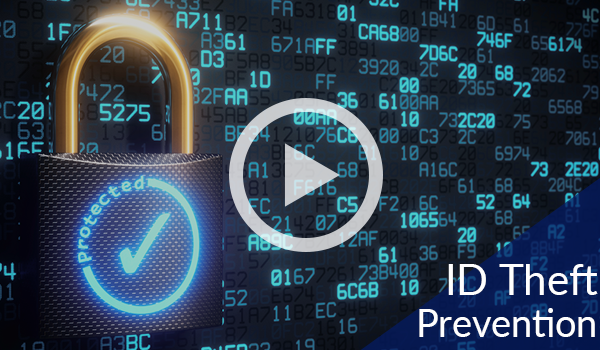Learning Center

Introducing Bill Pay from First Federal Savings Bank.
Simply the best way to manage your payments.
- Pay Virtually Anyone. From the local bakery to a Fortune 500 Company, even your babysitter.
- Send Money to Friends and Family. All you need is their email address or cell phone number.
- Same Day/Next Day Payments. Payments can often be received in as little as one business day, even that same afternoon if necessary.
- Group Payments into Categories. Organize your utilities, cable and phone into a folder named household.
- Account to Account Transfers. Even accounts at other financial institutions. Your money is always available, regardless of where you keep it.
- Receive eBills. Green, more convenient, more secure and easier to manage.
- Reminders. Receive updates through email when you receive a bill, or when it's due.
- Automatic Payments. Great for bills that stay the same each month, like your rent and your car loan.
- Search Bill History. Search by company, date and status, the moment you need an answer, wherever you are.
- Message Center. Get quick answers to questions you might have.
- Completely safe.More secure than mailing paper checks.

Introducing EMV Chip Cards.
Enhanced Security for your Debit and Credit Cards
First Federal Savings Bank will soon offer credit and debit cards with chip technology. The embedded computer chip provides more security and wider international acceptance.
A microchip embedded in every card adds a new layer of protection against fraud for purchases made at the point of sale. Information programmed into the chip is personalized for your account and each transaction generates a unique code, adding an extra safeguard against unauthorized use and counterfeiting. These cards are already in wide use around the world and are now becoming the standard in the U.S.
Follow these steps to use your card at a chip-enabled terminal:
- Insert your card, face up and chip end into the chip-enabled terminal.
- Leave the card in the terminal during the entire transaction.
- Follow the instructions on the screen and either sign your name or enter your PIN as needed. Be sure to remove your card and take your receipt when the transaction is complete.
If a merchant isn't using a new chip-enabled terminal yet.
You will 'swipe' your card to make your purchase, just as you do today. EMV Chip Cards will continue to have the magnetic stripe on the back.
Online or phone purchases
Provide your card information as you have done in the past. EMV Chip Cards will not change the way payments are made online or by telephone.
At an ATM
The process is essentially the same as at a merchant. Insert your card, leave it in the ATM, and follow the prompts on the screen. Depending on the type of ATM, you might be prompted to re-insert your card. Leave the card in the ATM until the transaction is complete and the card is released, and then remove your card. A PIN is needed for ATM transactions.

Deposit Insurance Coverage
The more you know, the safer your money.
The FDIC – short for the Federal Deposit Insurance Corporation – is an independent agency of the United States government. FDIC coverage protects you against the loss of your deposits if an FDIC-insured bank or savings association fails. FDIC insurance is backed by the full faith and credit of the United States government.
All FDIC-insured banks must meet high standards for financial strength and stability. The FDIC, with other federal and state regulatory agencies, regularly reviews the operations of insured banks to ensure these standards are met. The FDIC insures all deposits, including checking, NOW and savings accounts, money market deposit accounts, and certificates of deposit (CDs), up to the insurance limit.
On July 21, 2010, the deposit insurance coverage for all deposit accounts was permanently raised to $250,000 per depositor, per insured depository institution for each account ownership category. Insurance coverage for certain retirement accounts, which include all IRA deposit accounts, was increased permanently to $250,000 per depositor in 2006.
The FDIC does not insure the money you invest in stocks, mutual funds, life insurance policies, annuities, or municipal securities, even if you purchased these products from an insured bank. The basic insurance amount is $250,000 per depositor per insured bank.

Learn to protect yourself from Identity Theft. First Federal Savings Bank can help.
Your identity is one of the most valuable things you own. It’s important to keep your identity from being stolen by someone who can potentially harm your good name and financial well-being. Identity theft occurs when someone uses your name, address, Social Security Number, credit card or financial account numbers, passwords, and other personal information without your knowledge to commit fraud or other crimes. While the words may sound like a foreign language -- Phishing, Pharming, Vishing, Spyware, Dumpster Diving — they are actually techniques used by thieves to put your identity and finances at risk. And their attacks grow more frequent and sophisticated every year. Identity theft is the fastest growing crime in the United States. According to US Department of Justice statistics, it’s now passing drug trafficking as the number one crime in America.
How to protect your identity
The simple fact is you can protect yourself against most forms of identity theft. The first step is education. To make it easier to understand, we’ve divided identity theft into the five “Danger Zones.” Take a few moments to learn about each of the Danger Zones and the steps you can take to avoid being a victim.

Introducing Personal Internet Banking.
Now you can have 24-hour access to real-time account information from the convenience of your personal computer. Personal Internet Banking is convenient, easy to use, and more secure than ever.
- Check all your account balances, pay bills, and make transfers right from the Home Page
- View real-time account balances, check images and history
- 24-hour access to checking, loans, and CDs
- Export history to financial software or spreadsheets
- Transfer funds between accounts
- Pay bills online
- Request stop payments
- Safe and secure

Manage your money anytime, anywhere with Mobile Banking
- Instant Balance: When enabled, users can securely preview balances without logging in.
- Touch/Fingerprint ID: Log in using your fingerprint instead of a password with Apple's Touch ID or Android's Fingerprint Authentication.
- Account Balances: View your account balances in real-time.
- Recent Transactions: View both recent and pending transactions.
- Check Images: View images of the front and back of your checks.
- Transfer Funds: Easily move money between your accounts.
- External Transfers: Transfer money with other financial institutions.
- Add Contacts: Add companies and people to send money to.
- Send Money: Schedule payments to companies and people.
- Request Money: Request money from other people.
- Receive Money: Accept payments from other people.
- Deposit Checks: Deposit paper checks using your phone's built-in camera.
- Debit Card Control: Instantly turn your debit or credit card ON or OFF.
- Credit Score: When enabled, simply log in to check your current credit score.
Fully secure.
Use Mobile Banking with complete confidence. It delivers the highest level of security thanks to multiple layers of authentication.
